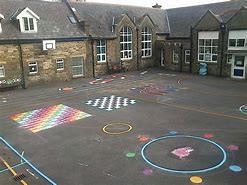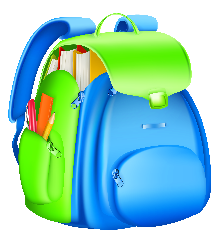Going Back to school and How to Support Your Child
- Fragile X Society

- Feb 17, 2021
- 5 min read
Updated: Dec 2, 2021
from Caroline Pringle (Families and Professionals Advisor, Child Enquiries)
Originally published 21 July 2020, updated 24 August 2020, final update February 2021
NEW: Download Caroline's presentation and video on 'Going Back to School' here.
Please note that this was produced for going back to school in the autumn term rather than February/March 2021, but the information is still relevant.
In Scotland there will be a phased return to school from late February and there are proposed plans elsewhere in the UK to return from March 8th onwards. For some children they may have already been attending, but this was most probably for a few days a week and in small groups. Therefore, for the majority of children it will be a major adjustment getting back into the school routine. For children with Fragile X, transitions and change of routine are difficult concepts for them to cope with and can cause high levels of anxiety, therefore I hope the following information will be of help.
What must be appreciated is that schools are making their own plans and agreements for dealing with the return of all pupils. Primary schools will have each class as a bubble with their teacher and teaching assistants and there will be no interaction with other classes. There will be staggered lunch and play times and the possibility of staggered school hours to alleviate problems of arriving at and leaving schools
In senior schools it is possible that schools will decide that teachers move from class to class instead of the pupils, who will remain in one classroom. Within mainstream and special schools there needs to be arrangements for clinicians and therapist such as speech and language therapists and occupational therapists visiting your child as they will be moving between settings.
We will give you links to government websites as and when they become available to us.
Also don’t forget the Department for Education (DfE) have set up a helpline offering guidance for anyone with education related questions. The number is 0800 046 8687, and lines are open 8am-6pm (Monday – Friday), and 10am – 4pm (Saturday and Sunday).
How to support your child
What has changed and what is the same?
If you are able to discuss this with your child, make them aware that although many things have changed within the school such as being in a class bubble with their teacher and having lunch in their class etc., there are many things that will stay the same. They will still be with all their classmates, and they will still have lunch and play time together. With all the focus on going back to school, it is also important to talk about what will be the same at home and after school too e.g. they will still have spaghetti bolognaise on Monday nights, they can still play with their Lego and go out on their bike for exercise.
How do we feel?
For many children who have been happy at home with limited interaction with the outside world, they will be extremely anxious about the new social situations they will find themselves in. They will have had the experience of going back to school after the first lockdown but that was many months ago. Some may not have retained that information and experience so do bear in mind that they may be concerned as to what is expected of them when they return to school. To reduce any anxiety, give your child the opportunity to talk about how they feel about going back to the school routine, you can use emotion fans or simple emojis to start the conversation.

Contact have produced a webinar to help parents manage their child’s behaviour and worries about returning to school.
Transition
Transition from one environment or activity to another can cause high levels of anxiety, especially if certain areas in school have additional markings or boundaries. Some schools have videos on their website to explain the new route into school and what the classrooms look like. I’m also aware that some schools provided photos when going back at the autumn term of a child’s new desk, coat hook etc and most importantly of their new teacher. This most probably won’t have changed much from then but as we are coming to the end of another lockdown it is still important to use them again as reminders for your child. If your child’s school have not passed on photos, even just taking some yourself of outside school can help when preparing your child’s return in February/March.
Sensory
Just as your child had to adapt to all the sensory stimuli within the home during lockdown, they will now need to adjust to the different sensory experiences they encounter within the school environment. They may well need the opportunity to have sensory breaks in the day and do remind school of this. This may be limited to where they are able to visit in the school, but physical based movements can help them self-regulate and stay focussed. I would normally suggest activities such as jumping on the trampoline/trampette, run around the playground, and rolling on a physio ball, but possibly these may not be feasible at the present time and it might have to be activities such as wall push ups. Do remember to ensure they have their sensory (fidget) bag of items to help them keep calm.
It might be useful to front load with a sensory activity to help them cope with the journey to and from school, have an item such as a stress ball or a tangle toy and casually hand them this item prior to the journey. You are ‘feeding’ their nervous system and they can concentrate on this item rather than being anxious about what lies ahead i.e. going through the school gates. It might be when they get home, they need some chill out time and the opportunity to escape to a calm area such as a pop-up tent to help them readjust.
Visual aids
Although there will be conversations in your household about going back to school, you will know when the time is right to introduce visual prompts such as objects of reference i.e. having their school bag and uniform laid out and the use of visual schedules. It might be you implement these the week before, day before or even on the morning to reinforce what is going to happen.
In addition, have a plan for afterschool, try not to focus everything on the school day and it could help to put an activity that will be happening after school on your visual schedule/planner.
I have previously explained the use of visuals in a snippets of advice blog.
Social Stories
Social Stories still play an important part in preparing your child. Below is an example of what may help. I have access to Widgit symbols and I am happy to help you in writing up a social story for your child. If you want to find out more about social stories you can access my previous snippets of advice blog.
Widgit Symbols © Widgit Software 2002 – 2020


You can print off a copy of the Going Back to School Social Story here.
I hope the information has been of help, do contact me directly caroline@fragilex.org.uk or telephone 01371 875100 to discuss further and don’t forget I can help you with social stories and visual aids.






